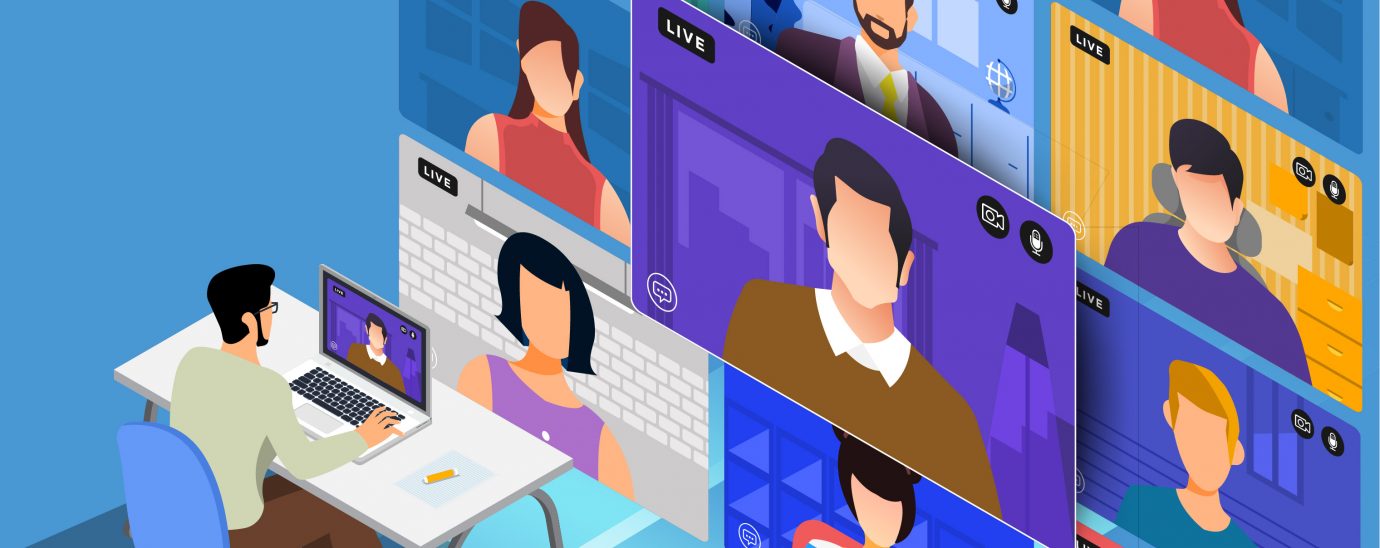Doom and Zoom: The future of working from home

Lysa Campbell, CEO of Retail Marketing Group, shares her thoughts on the future of working from home with the limitations of traditional video-conferencing tools and the implications of using these on businesses long-term.
With offices across the UK tentatively reopening their doors to staff and companies starting to explore remote, hybrid or permanent in-office options, the future of working from home is yet to be decided. Whilst lockdowns continue to varying degrees, businesses have realised that remote or hybrid working is a viable long-term option and has had little to no impact on productivity or output.
For employees, the prospect of permanent remote working elicits mixed reactions. Increased flexibility and independence is certainly a bonus, but after more than a year of enduring significantly reduced social contact and battling with video conferencing tools for the simplest of meetings, what effect will this have on individuals long term? Whatsmore, how can business leaders ensure they support their staff with the facilities they need to make permanent remote and hybrid working a success?
Perpetual Zoom fatigue
Experts had long predicted video conferencing would revolutionise the entrenched routine of commuting to and from offices five times a week. The COVID-19 pandemic, however, accelerated this change significantly and brought the majority of business online in a matter of days.
Now, over a year later, employees have relied on video conferencing for most communication – but what impact is this having on individuals psychologically?
Initially coined as a flippant phrase, the so-called ‘Zoom fatigue’ is now a scientifically proven phenomenon. One study explained it is caused by excessive close-up eye contact, constantly seeing your face on video and complete elimination of nonverbal communication. Other studies also found that even millisecond delays in virtual verbal responses negatively affect our interpersonal perceptions, unconsciously building a perception of the other person as untrustworthy, hesitant or even cagey.
Video conferencing tools alone do not fulfil our needs to communicate effectively and positively.
Finding human connections remotely
Having suffered from perpetual Zoom fatigue since March 2020, many employees are desperate for straightforward communication that allows them to connect beyond just video. The social limitations of video conferencing tools are not the only downsides; relying exclusively on these tools limits the informal, ‘water-cooler’ style conversations that can help develop relationships with colleagues or resolve problems naturally and relaxed.
Video meetings start and end at specific times, and it often feels like there isn’t space in between for informal, creative conversations. In addition, calling someone out of the blue can feel forced, unplanned and too pressured, meaning that it can be challenging to find an equivalent for office chat. As a result, employees often feel even more isolated in their remote workspace, breaking down connections in the team and damaging a company’s workflow.
To address this, businesses desperately need to offer their employees immersive, interactive solutions to provide a more human connection. There is still space to utilise video conferencing tools when suitable, but by allowing employees to take advantage of other platforms and solutions, they will get the best of both worlds, without the adverse psychological effects.
The virtual office
A solution that has snowballed over the course of the lockdowns is virtual offices. Only a handful of these platforms existed pre-COVID-19, and yet remote working has meant that there are now hundreds available for businesses to take advantage of.
Similar to life-simulation video games like The Sims, virtual offices allow employees to create their own avatars and join a virtual world with meeting rooms, office spaces, conference halls, and even recreational spaces. The avatars can move freely around the world or settle down at a desk to work, with each user having the choice about where they want to work. Informal conversations happen as users move through the online world, and being in the office space provides a low hum of chatter in the background, making it feel like you are in your office, surrounded by colleagues. What’s more, virtual offices offer serious business applications in a digital environment, with screen sharing, document uploads for collaboration, whiteboarding, webcam feeds to screens, streaming and video playback. All this is interactive for individuals or groups and offers a real sense of ‘being there’ to a dispersed workforce.
Virtual offices provide a crucial sense of community whilst working from home. Particularly for those companies who have made a move to permanent remote working, these solutions mean employees can maintain strong communication links with their colleagues, feel like they are part of a team and even be enriched by social events and activities to combat any sense of isolation.
For companies looking at hybrid solutions to working from home, offering a virtual office space means a middle ground between those in the office and those who are remote. With many business leaders concerned about how employees will communicate and work effectively in a hybrid scenario, this solution means that remote workers can still be a part of the office and interact just as they would if they were there in person.
READ MORE:
- The future of work: driving employee engagement in a hybrid working landscape
- How Wi-Fi6 will optimise hybrid working
- Which European countries have the best and worst cybersecurity?
- McAfee: How to make telehealth safer for a more convenient life online
The future of working from home
Video conferencing tools will certainly always have their place in the workplace even as we move out of lockdowns. COVID-19 has proven that businesses can function effectively remotely, and as companies build out a more dispersed workforce, tools such as Zoom and Teams will continue to play a significant role. Yet, working through these lockdowns has highlighted the impact that video conferencing tools can have on employees’ psychological and social well being. As a result, the need and demand for a richer, more effective solution to sit alongside these tools is growing, and it is time for companies to take note.
For more news from Top Business Tech, don’t forget to subscribe to our daily bulletin!
